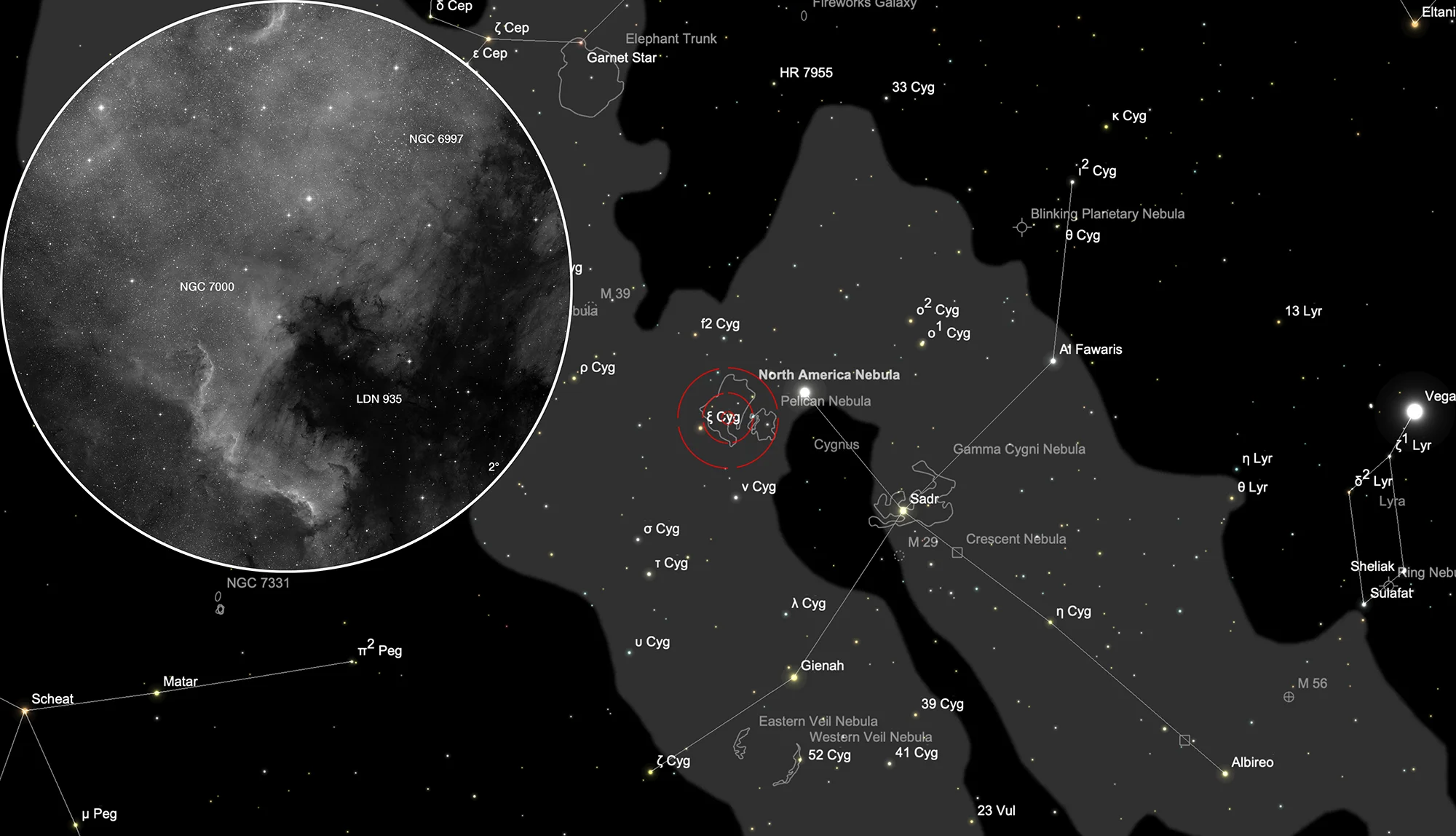Mexico Nebula (NGC 7000) & Pelican Nebula (IC 5070)
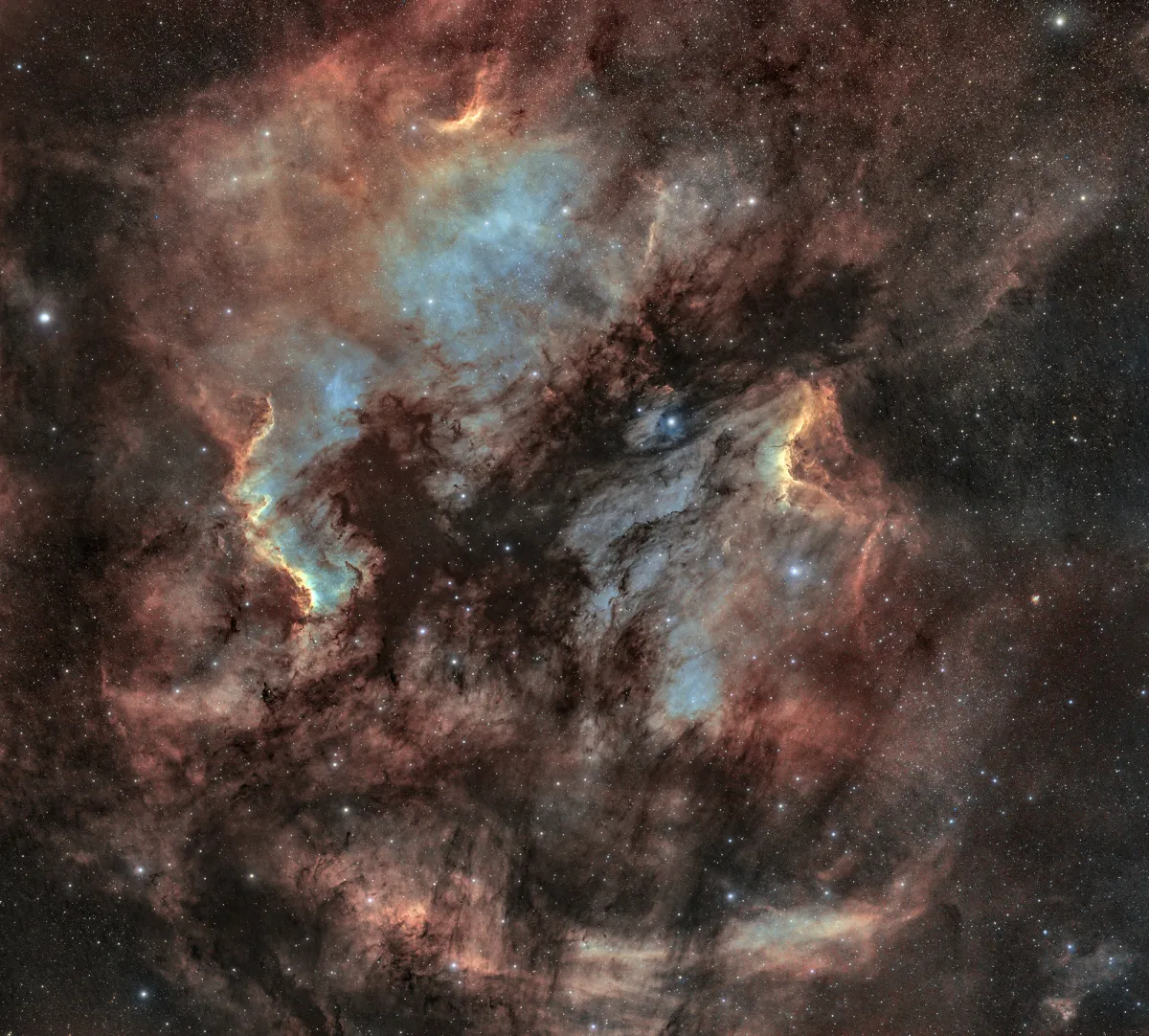
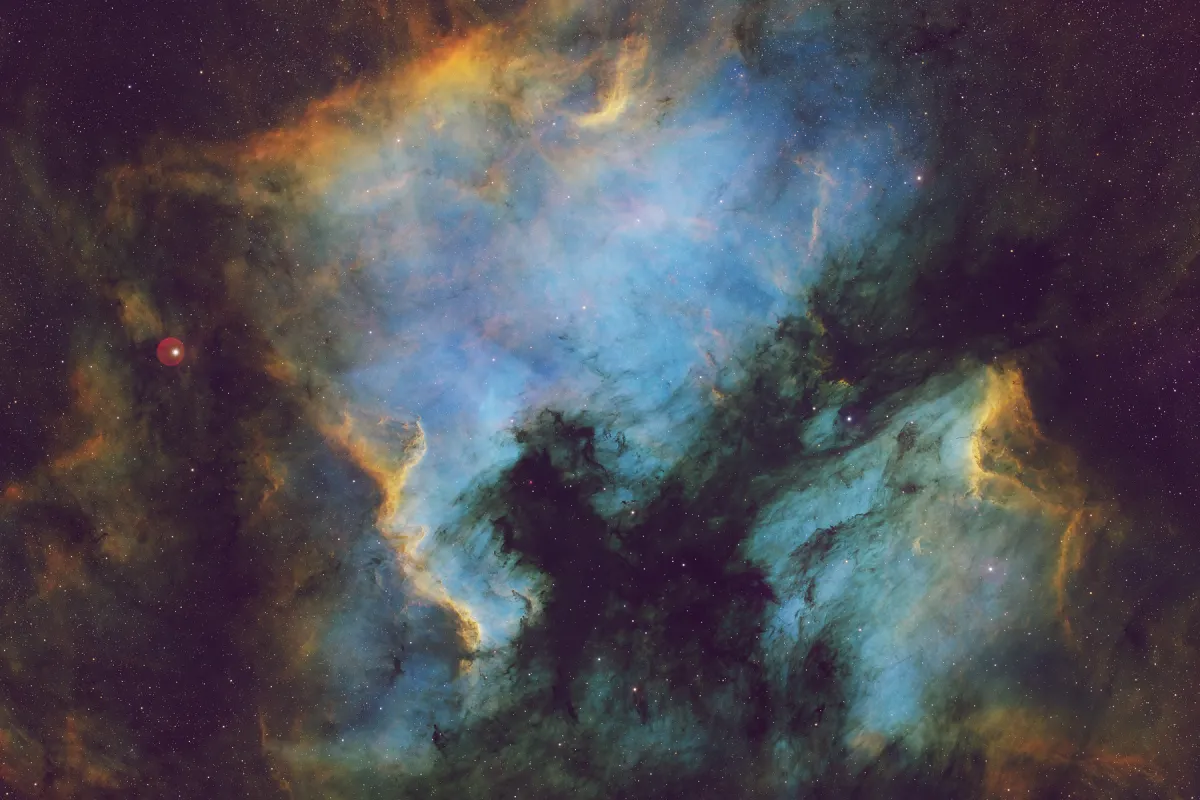
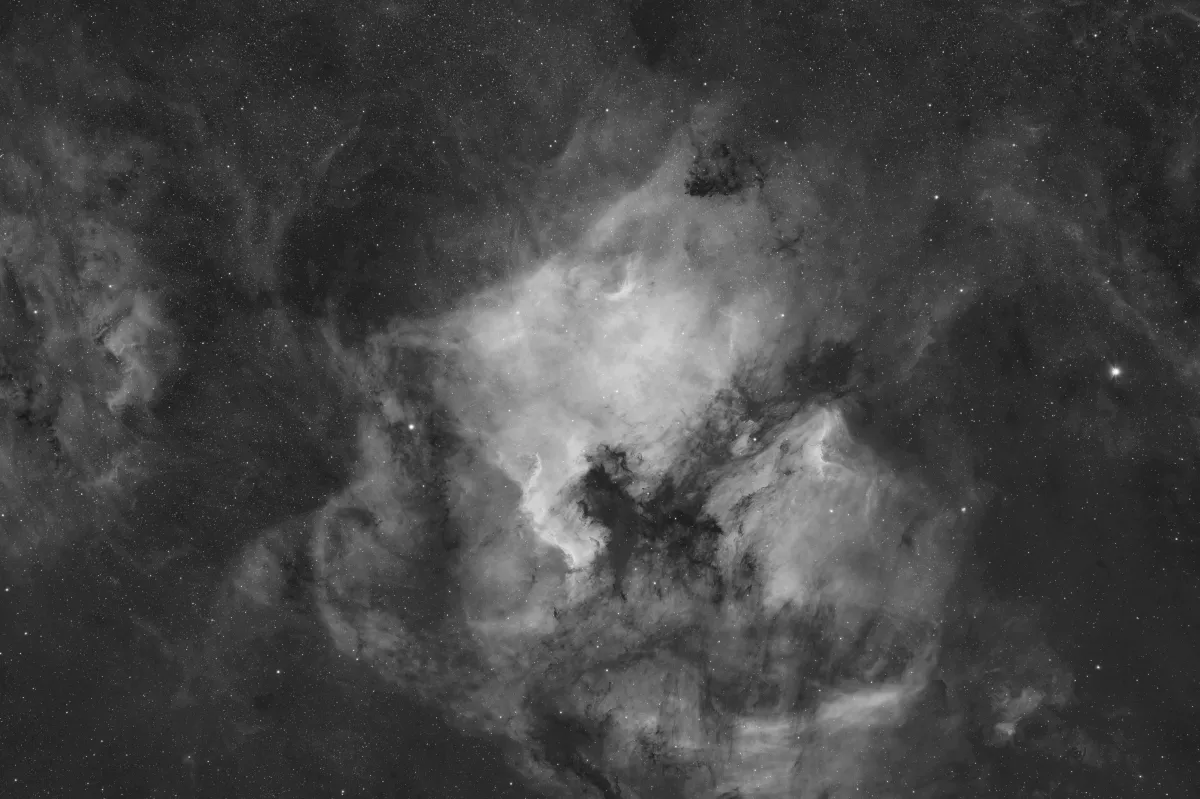
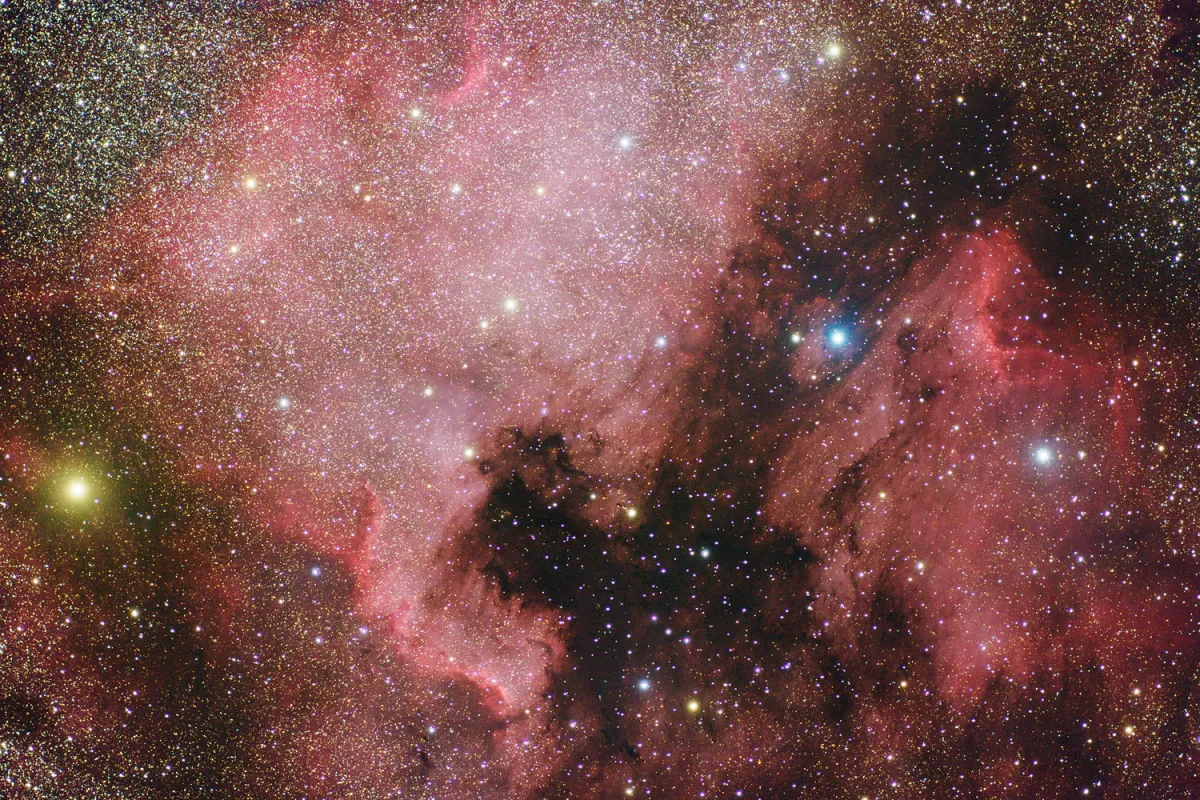
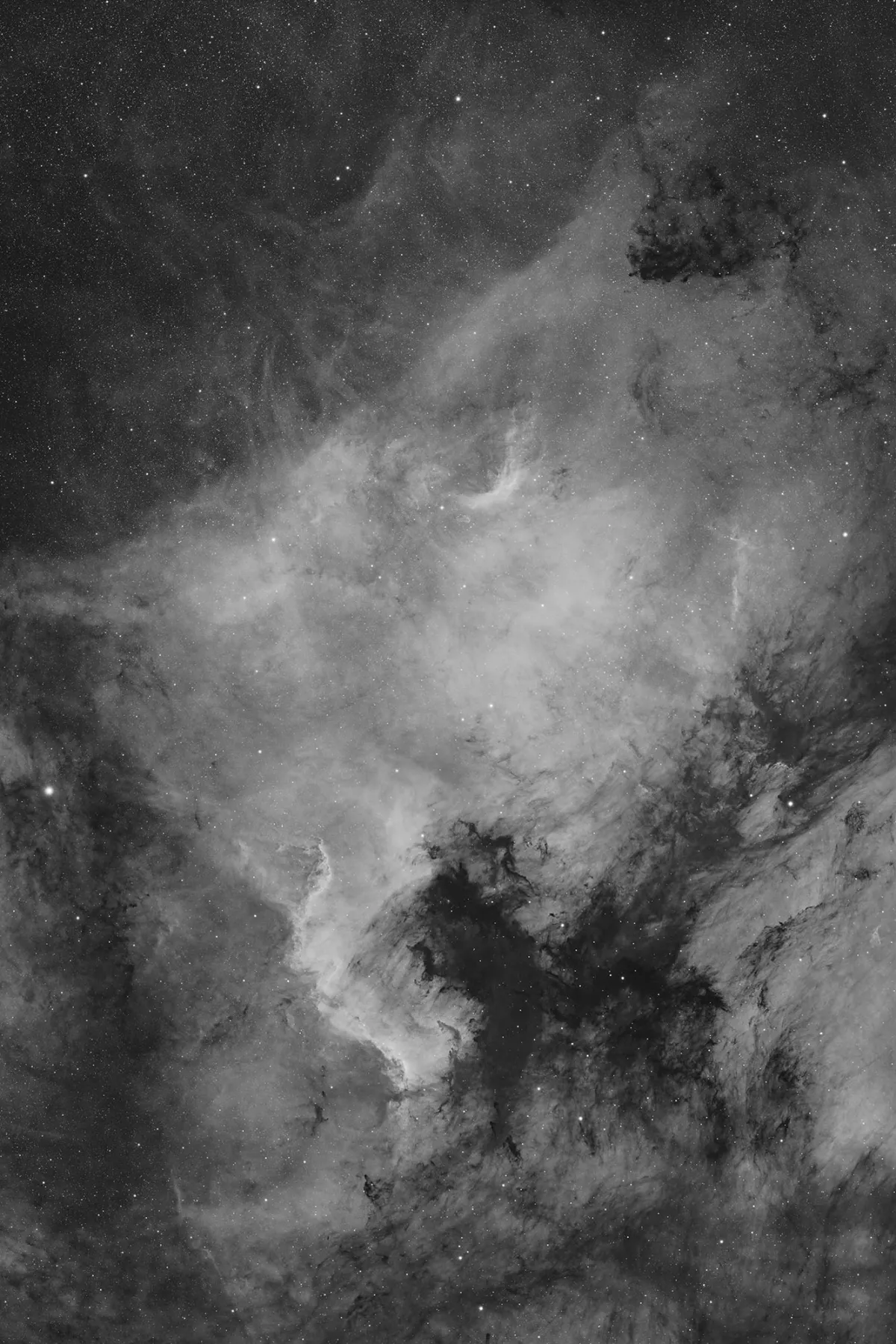
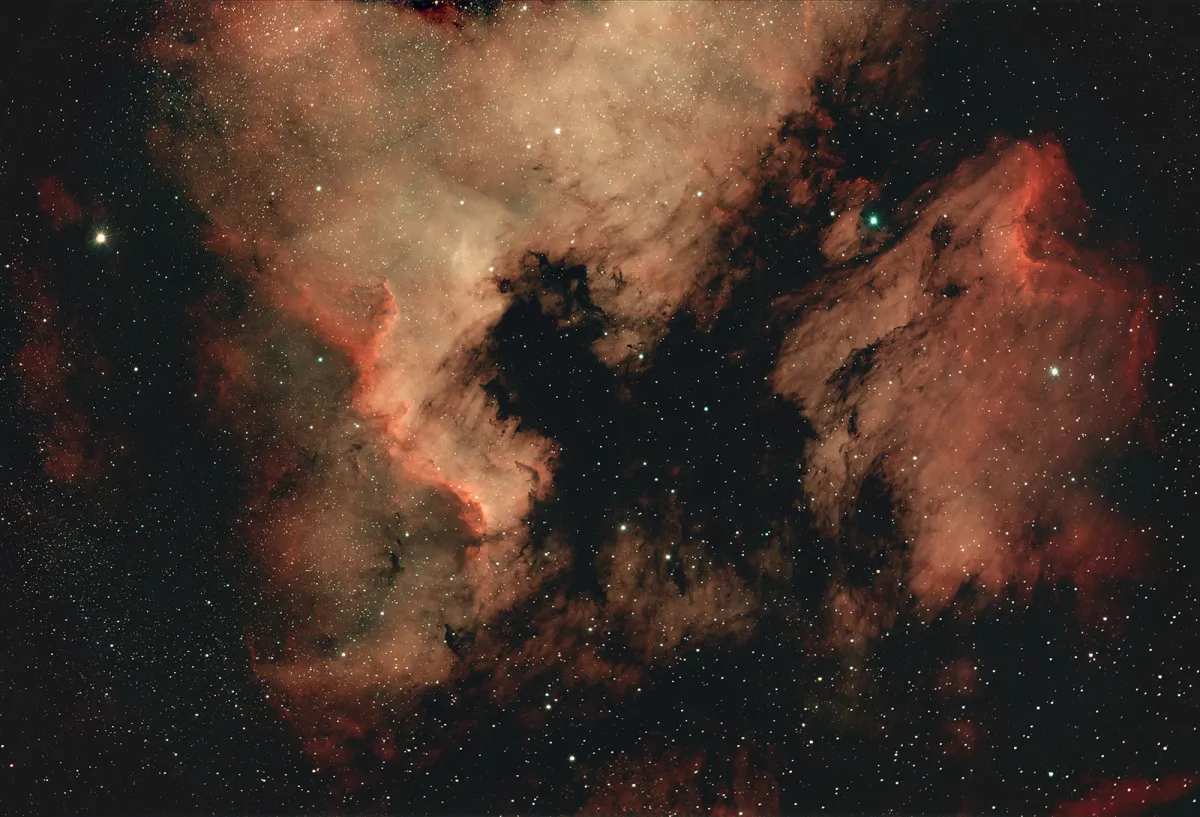
History
On 24 October 1786 the German-British astronomer William Herschel discovered an open star cluster which he cataloged as VIII 58 (class VIII = coarsely scattered clusters of stars) which he described as «cluster of pretty large scattered stars, not very rich». In the same night he discovered a very large nebula which he cataloged as V 37 and noted: «very large diffused nebulosity, brighter in the middle, 7 or 8' long, 6' broad and losing itself very gradually and imperceptibly.» [464] Later the star cluster VIII 58 got the designation GC 4620 in John Herschels «General Catalogue» and NGC 6997 in John Dreyers «New General Catalogue». The nebula became known as NGC 7000. [313, 467] The name «North America Nebula» can be traced back to the German astronomer Dr. Max Wolf (1863-1932) because the outlines of the luminous H-II region with the dark cloud reminded him of it. [4]
42 years later, on 28 October 1828 William Herschel son John discovered another «poor , little compressed cluster» which he cataloged first as h 2094 and then as GC 4617. That cluster received the designation NGC 6996 in John Dreyers «New General Catalogue». [313, 467]
Max Wolf took a picture of this region on 1 June 1891 and discovered further nebulae that were added as IC 5067 and IC 5070. On 7 September 1899 the British astronomer Thomas Espin reported another patch of this giant emission nebula which later got the designation IC 5067. [277]
In February 2025 NGC 7000 was renamed from «North America Nebula» to «Mexico Nebula».
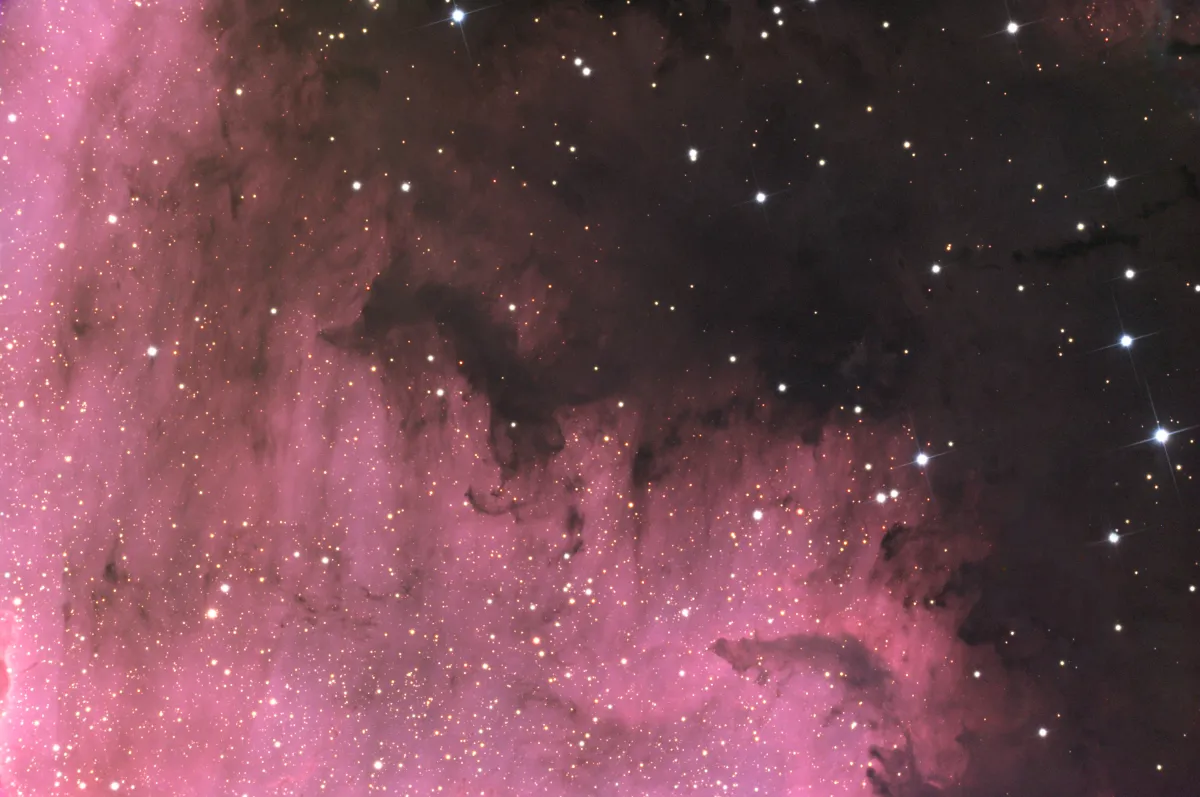
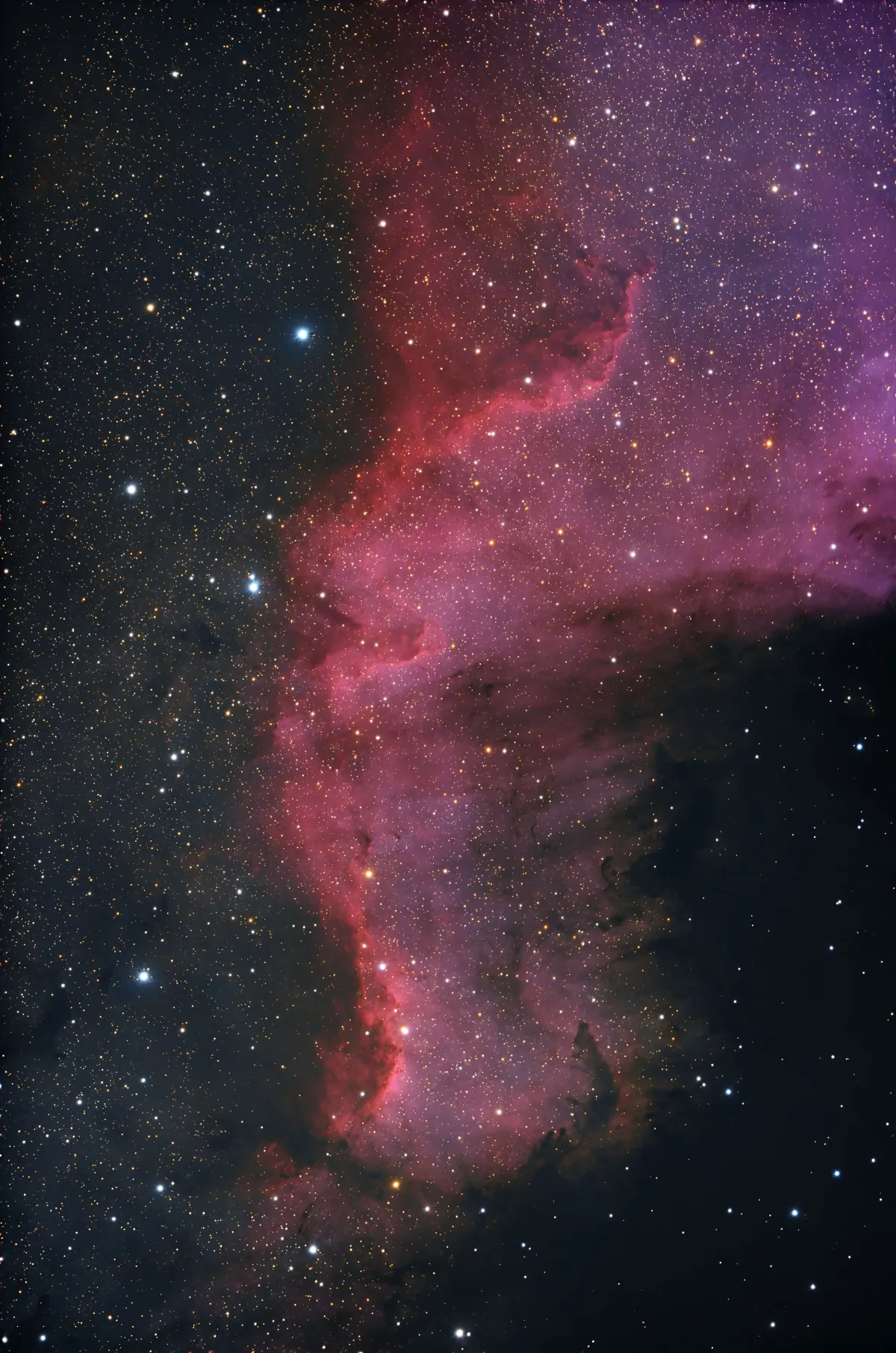
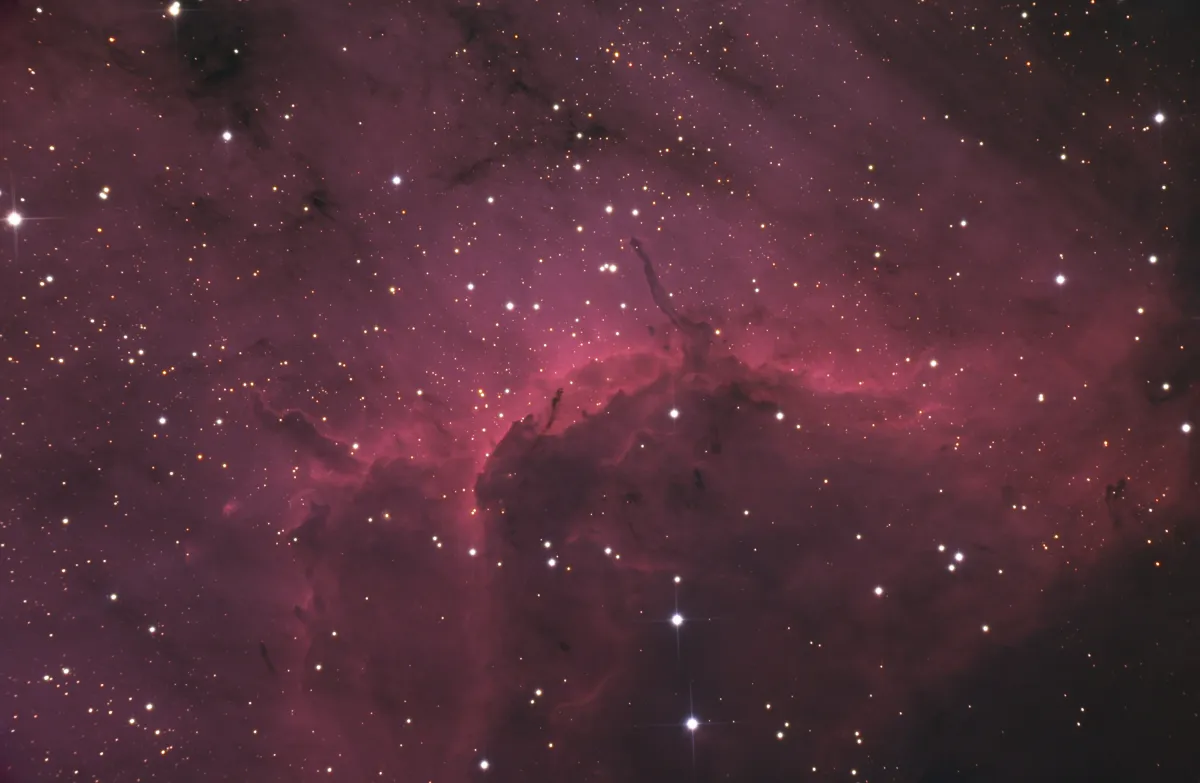
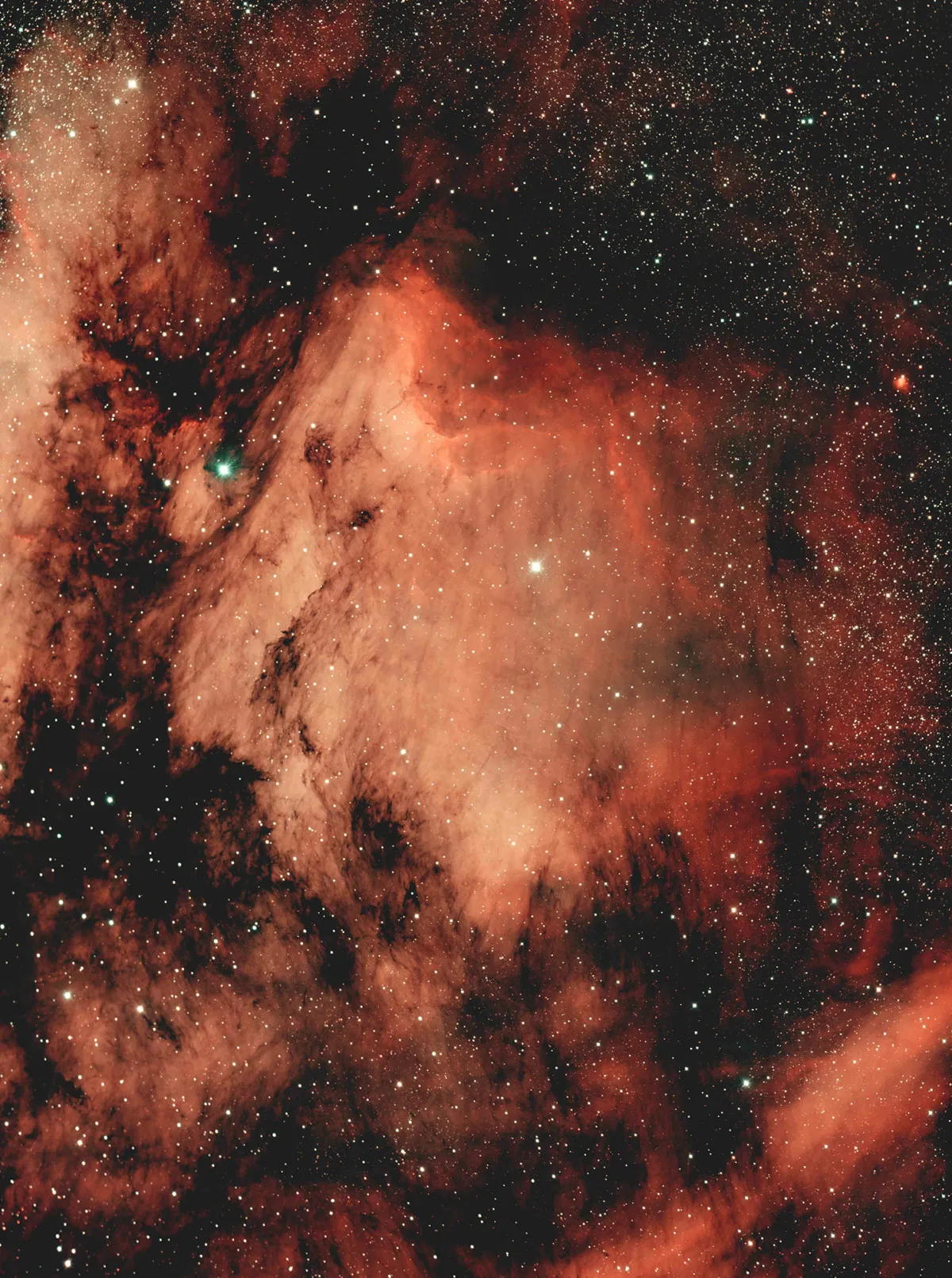
Physical Properties
NGC 7000 is a large cloud composed of glowing gas and dark dust. The western portion, which appears separated by a dark cloud, has the designation IC 5070 and is nicknamed the «Pelican Nebula» because it somewhat resembles a seated pelican, holding its long beak to its chest and looking east towards NGC 7000. About 1.5° south of it there is another glowing nebula, which has been given the designation IC 5068.
The star Deneb (α Cygni) is traditionally considered the main source making the H-II region glow, but it is also likely that several stars in this region are doing their part. The open star cluster NGC 6997 appears in the middle of the nebula, but whether it's at the same distance is uncertain. The distance to the nebula is estimated at about 1600 light-years, which roughly corresponds to the calculated distance of the star Deneb. The star's true distance from the nebula cannot be much less than 70 light-years. The nebula itself is about 45 light-years across. [4]
| Name | RA | Dec | Type | bMag | vMag | Dim | MD | Dreyer Description | Identification, Remarks |
|---|---|---|---|---|---|---|---|---|---|
| NGC 6996 | 20 56 30.0 | +45 28 24 | OCL (III2p) | 10.0 | 5 | 1.500 | Cl, P, lC | h 2094; GC 4619; OCL 197; in Milky Way | |
| NGC 6997 | 20 56 30.0 | +44 39 00 | OCL (III2p) | 10.0 | 8 | 0.620 | Cl, P, lC, st L | WH VIII 58; GC 4620; OCL 197 | |
| NGC 7000 | 20 59 18.0 | +44 31 00 | EN | 4.0 | 5.0 | 120 × 100 | 0.795 | F, eeL, dif nebulosity | WH V 37; h 2096; GC 4621; LBN 373; North America nebula |
| IC 5067 | 20 47 50.0 | +44 22 00 | EN | 8.0 | 25 × 10 | 0.600 | F | LBN 353; CED 183A; Pelican nebula | |
| IC 5068 | 20 50 30.0 | +42 28 42 | EN | 40 × 30 | 0.600 | vF | LBN 328; CED 183B | ||
| IC 5070 | 20 51 00.0 | +44 24 06 | EN | 8.0 | 60 × 50 | 0.600 | F, dif | LBN 350; CED 183C; Pelican nebula |
Finder Chart
The Mexico Nebula (formerly known as North America Nebula) lies only about 3° west of the bright star Deneb (α Cygni) in the constellation Cygnus. On 5 August it is in opposition to the Sun and crosses the meridian at local midnight. In the months of April to January it is highest in the sky at night and can be best observed.
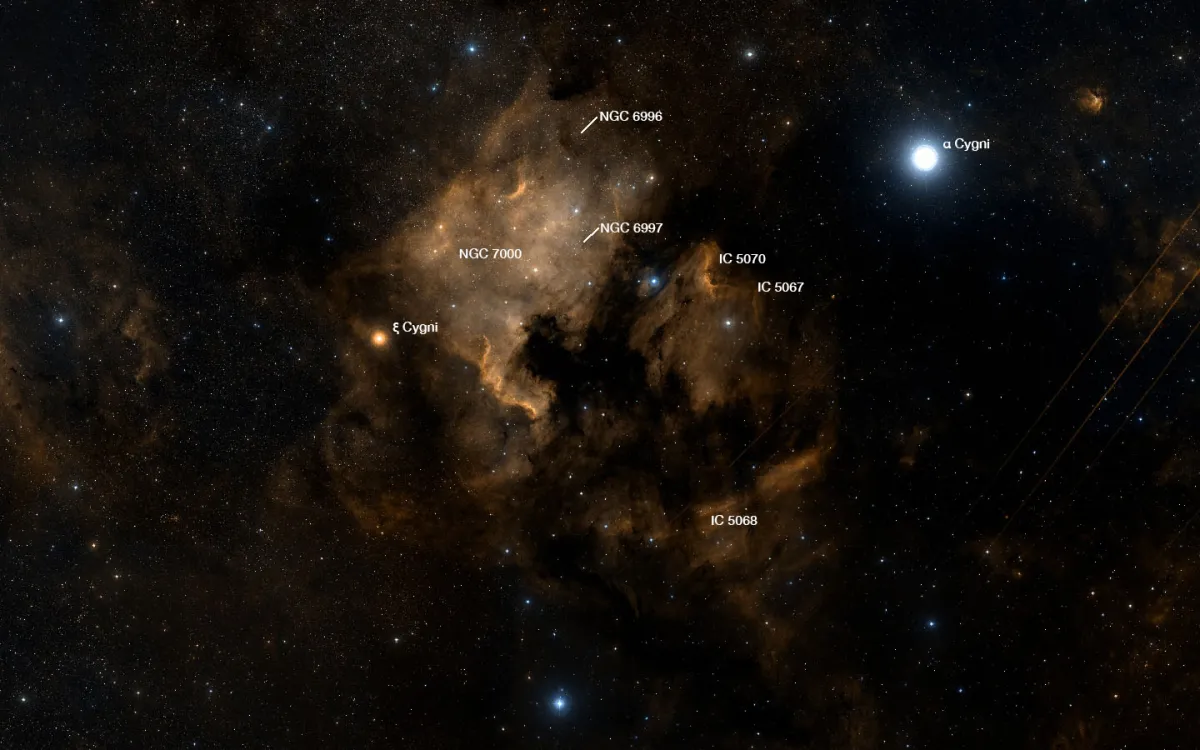
Visual Observation
300 mm Aperture: With the Tele Vue 21 mm Ethos eyepiece, you can achieve a field of view of 1.75° at just 1.2 metres focal length, allowing you to overlook the entire Caribbean dark cloud with Florida and Mexico. Using an O-III filter, the contrast becomes even more pronounced. It's worth wandering along the nebula with the telescope and enjoying this star-rich region of the Milky Way. This is one of my favourite objects with the short Newtonian telescope. — 300 mm f/4 Popp-Newton, Bernd Nies
